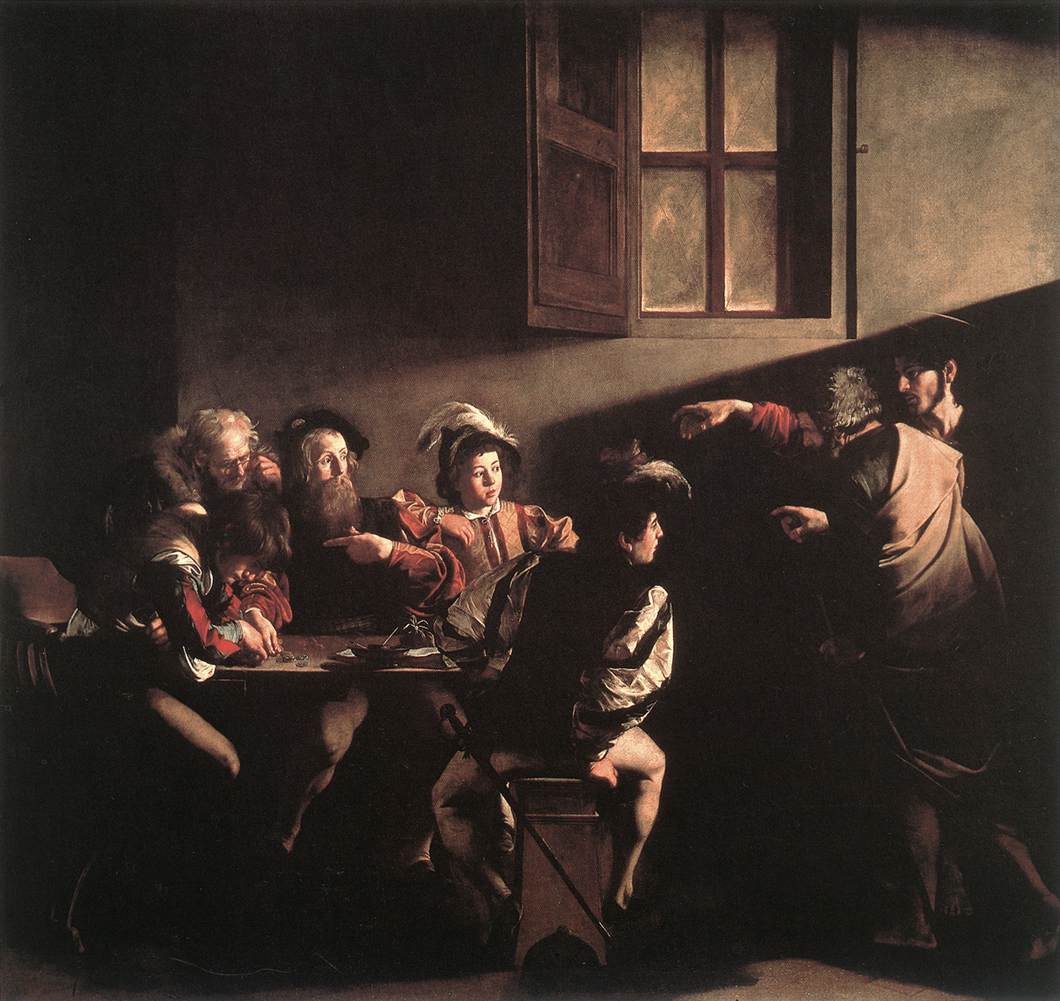
Ask any painter: Roman light is splendid. But beware!
Last week, on the 450th anniversary Michelangelo Buonarroti’s death, the Vatican Museums inaugurated a new system of illumination for viewing the artist’s frescoes of the creation of the world in the Sistine Chapel. Arguably, the new LED lamps installed in the famous chapel will make the frescoes look more true to how Michelangelo himself saw them as he mixed his pigments in the daylight back in the year 1512.
Roman light is famous, having lured painters to the City for centuries. But viewing the use of light and shadow in paintings exhibited in Rome is another matter! Not far from the Vatican in a number of Roman churches, for example, one must insert a one-euro coin into a sort of slot machine in order to (supposedly!) view Caravaggio’s Calling of St. Matthew, Conversion of St. Paul, and many other oil canvases by this bad boy painter of the early 1600s. The church chapels that contain these paintings are too dark for our eyes to see them.
Or are they?
I often wonder if Michelangelo and Caravaggio would allow us to spend a euro coin to view God touching Adam and the Crucifixion of St. Peter upside down in their respective venues! Whilst the new lighting technology truly makes these images more readable to us, the more serious art student coming to Rome might even wish to view these original works in natural light – which is to say, at different times of day, both sunny and overcast. For example, according to Michelangelo’s biographer and personal friend Giorgio Vasari, the artist’s style is characterized as what Vasari terms terribiltà, so it may be difficult to perceive this highly dramatic, end-of-the-world almost pessimism in the new LED lighting of the Sistine Chapel. In the very first panel of the Creation passages, does this new illumination really allow us to see God separating light from darkness?
Similarly, contemporary viewers of Caravaggio’s three canvases in San Luigi dei Francesi’s Contarelli Chapel should ask himself why it was that they shocked the Rome of his day. Why did his use of chiaroscuro earn him such notoriety and even rejection? I sometimes think of the painter’s contemporaries in other disciplines at the beginning of the 1600s, for example; Shakespeare putting on Hamlet or King Lear in those days in London; or better yet I think of the poem The Dark Night of the Soul by Spanish mystic St. John of the Cross.
These are ways I use to tone down the excess of electric light in such Roman places, when it is impossible to sit with such paintings in their original natural light and rich, rich shadows.
Jose Grave De Peralta, Drawing Instructor, Rome Art Program